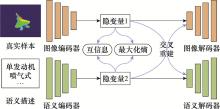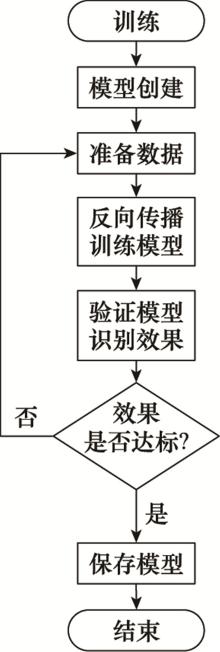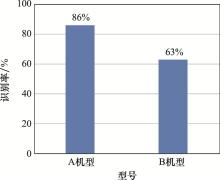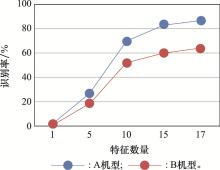| 1 |
ALAMRI F, DUTTA A. Multi-head self-attention via vision transformer for zero-shot learning[EB/OL]. [2021-07-30]. https://arxiv.org/abs/2108.00045.
|
| 2 |
JANIK M, GARD N, HILSMANN A, et al. Zero in on shape: a generic 2D-3D instance similarity metric learned from synthetic data[C]//Proc. of the IEEE International Conference on Image Processing, 2021: 2638-2642.
|
| 3 |
MICHELE B, BOULCH A, PUY G, et al. Generative zero-shot learning for semantic segmentation of 3D point cloud[EB/OL]. [2021-08-13]. https://arxiv.org/abs/2108.06230.
|
| 4 |
HE T, GAO L L, SONG J K, et al. 2021. Semantic compositional learning for low-shot scene graph generation[EB/OL]. [2021-08-19]. https://arxiv.org/abs/2108.08600.
|
| 5 |
BIANCHI F, ATTANASIO G, PISONI R, et al. Contrastive language-image pre-training for the Italian language[EB/OL]. [2021-08-19]. https://arxiv.org/abs/2108.08688.
|
| 6 |
NARAYAN S, GUPTA A, KHAN S, et al. Discriminative region-based multi-label zero-shot learning[C]//Proc. of the IEEE/CVF International Conference on Computer Vision, 2021: 8731-8740.
|
| 7 |
GOODFELLOW I, POUGET-ABADIE J, MIRZA M, et al. Generative adversarial nets. Advances in neural information processing systems[EB/OL]. [2014-06-10]. https://arxiv.org/abs/1406.2661.
|
| 8 |
KINGMA D P, WELLING M. Auto-encoding variational Bayes [EB/OL]. [2013-12-20]. https://arxiv.org/abs/1312.6114.
|
| 9 |
FELIX R, REID I, CARNEIRO G. Multi-modal cycle-consis-tent generalized zero-shot learning[C]//Proc. of the European Conference on Computer Vision, 2018: 21-37.
|
| 10 |
ISOLA P, ZHU J Y, ZHOU T, et al. Image-to-image translation with conditional adversarial networks[C]//Proc. of the IEEE Conference on Computer Vision and Pattern Recognition, 2017: 1125-1134.
|
| 11 |
KODIROV E, XIANG T, GONG S G. Semantic autoencoder for zero-shot learning[C]//Proc. of the IEEE Conference on Computer Vision and Pattern Recognition, 2017.
|
| 12 |
LAMPERT C H, NICKISCH H, HARMELING S. Learning to detect unseen object classes by between-class attribute transfer[C]//Proc. of the IEEE Conference on Computer Vision and Pattern Recognition, 2009: 951-958.
|
| 13 |
XIAN Y Q , LAMPERT C H , SCHIELE B , et al. Zero-shot learning-a comprehensive evaluation of the good, the bad and the ugly[J]. IEEE Trans.on Pattern Analysis and Machine Intelligence, 2018, 41 (9): 2251- 2265.
|
| 14 |
AKATA Z , PERRONNIN F , HARCHAOUI Z , et al. Labe-lembedding for image classification[J]. IEEE Trans.on Pattern Analysis and Machine Intelligence, 2015, 38 (7): 1425- 1438.
|
| 15 |
PATTERSON G, HAYS J. Sun attribute database: discovering, annotating, and recognizing scene attributes[C]//Proc. of the IEEE Conference on Computer Vision and Pattern Recognition, 2012: 2751-2758.
|
| 16 |
ZHANG L, XIANG T, GONG S G. Learning a deep embedding model for zero-shot learning[C]//Proce. of the IEEE Conference on Computer Vision and Pattern Recognition, 2017: 2021-2030.
|
| 17 |
ZHU Y Z, ELHOSEINY M, LIU B C, et al. A generative adversarial approach for zero-shot learning from noisy texts[C]//Proc. of the IEEE Conference on Computer Vision and Pattern Recognition, 2018: 1004-1013.
|
| 18 |
VERMA V K, ARORA G, MISHRA A, et al. Generalized zero-shot learning via synthesized examples[C]//Proc. of the IEEE Conference on Computer Vision and Pattern Recognition, 2018: 4281-4289.
|
| 19 |
ATZMON Y, CHECHIK G. Adaptive confidence smoothing for generalized zero-shot learning[C]//Proc. of the IEEE/CVF Conference on Computer Vision and Pattern Recognition, 2019: 11671-11680.
|







